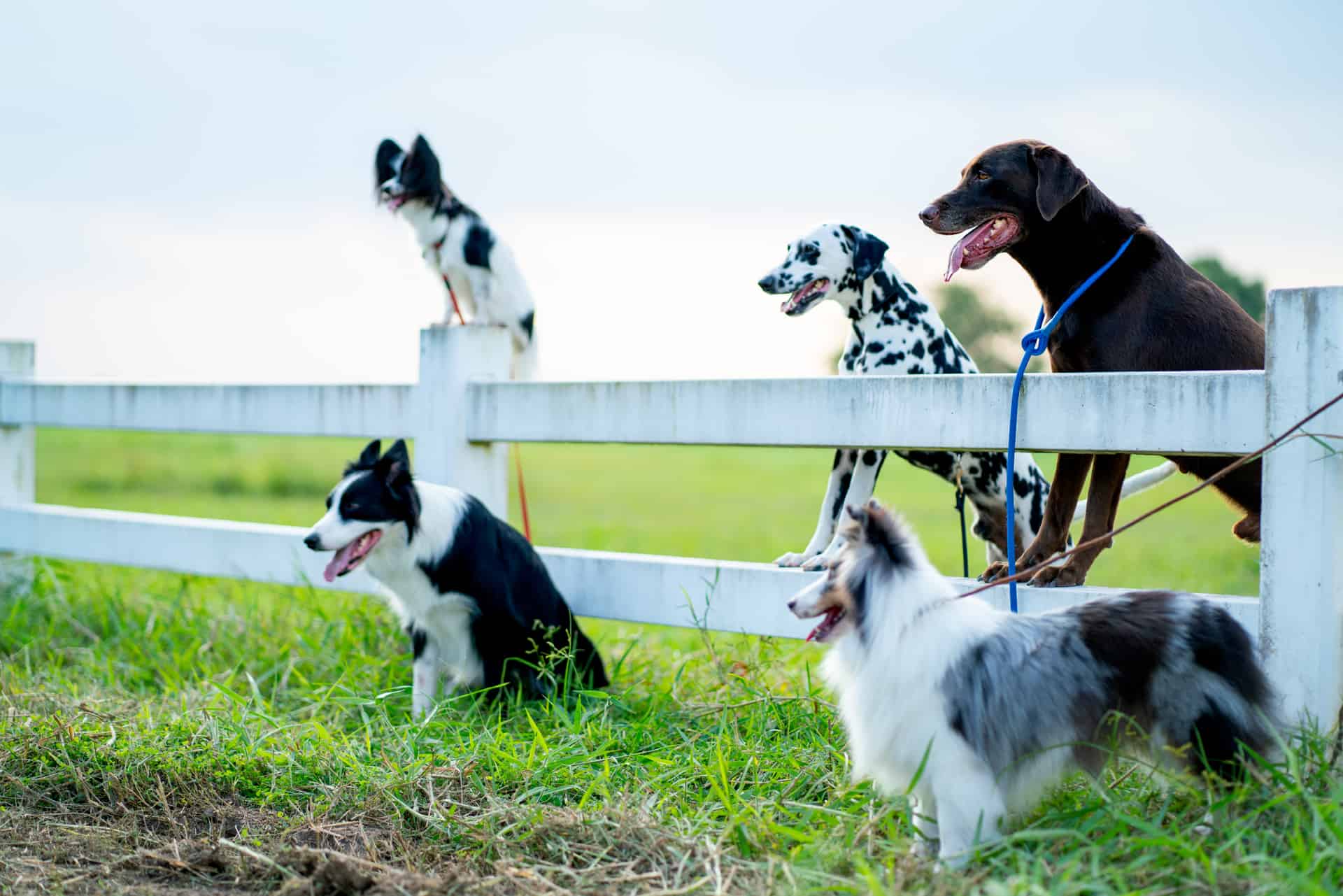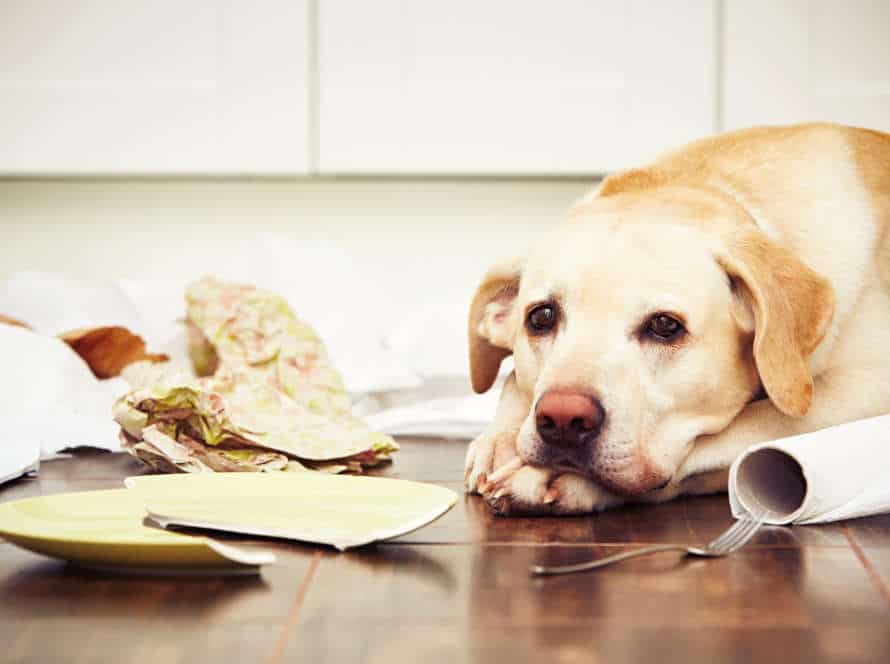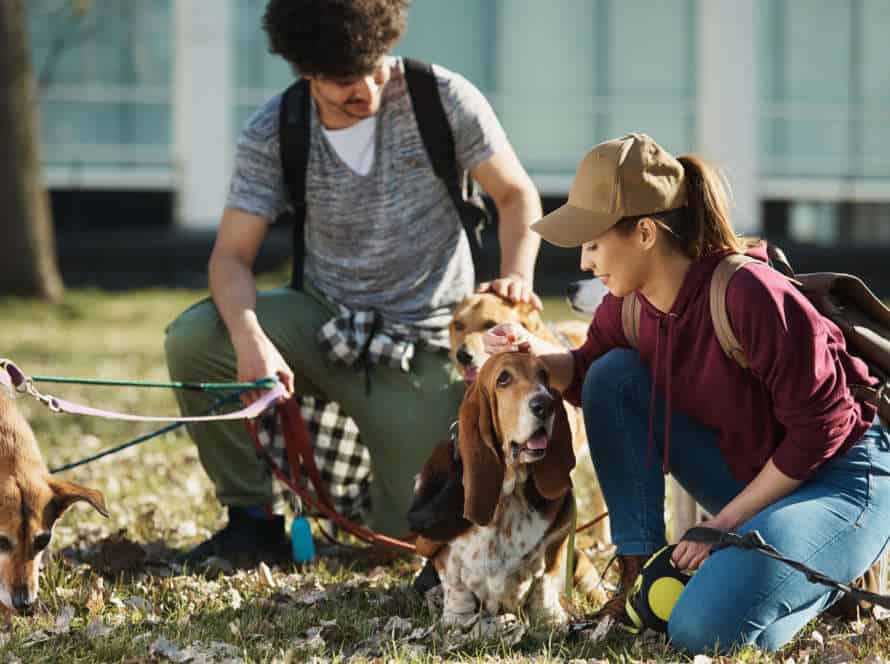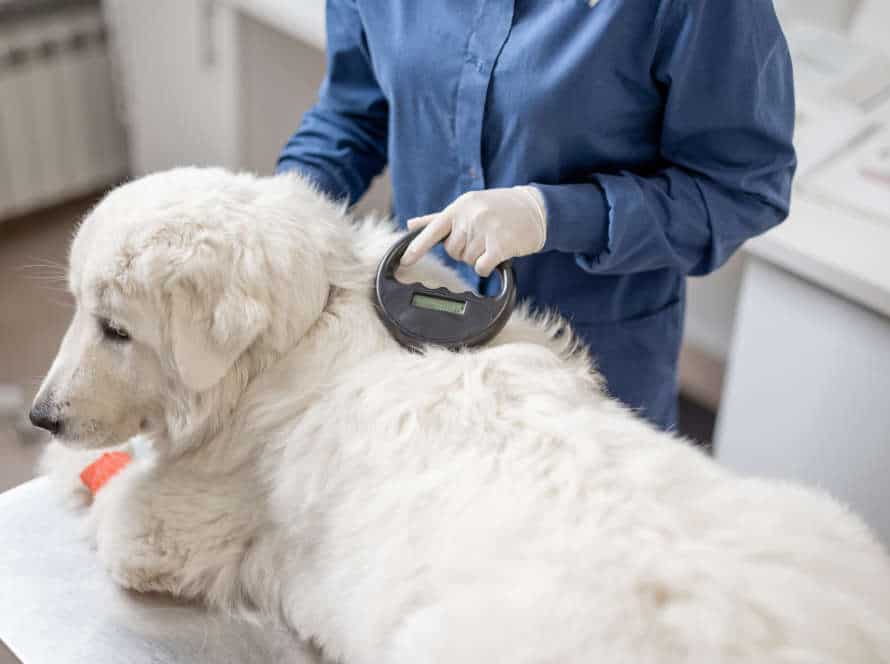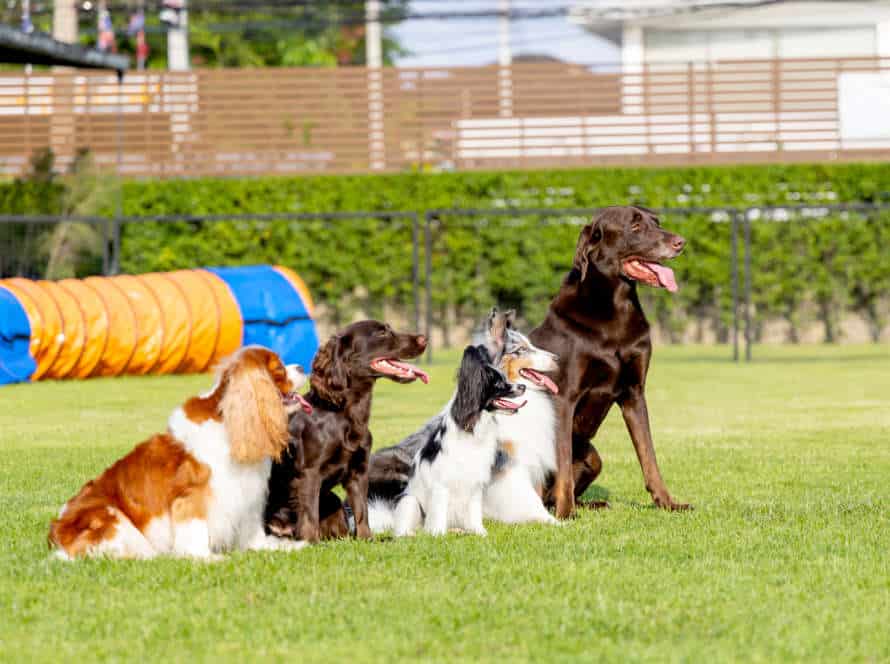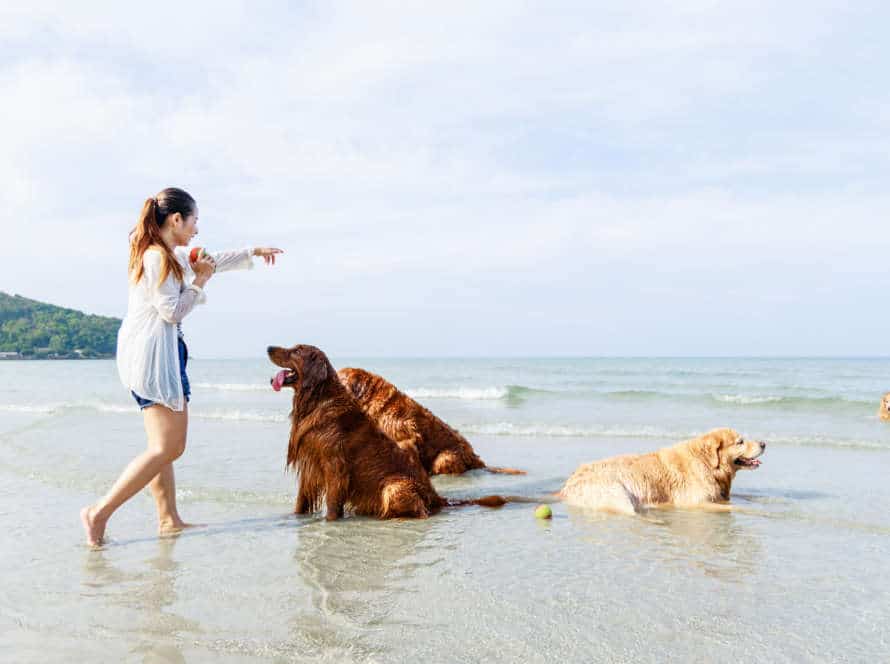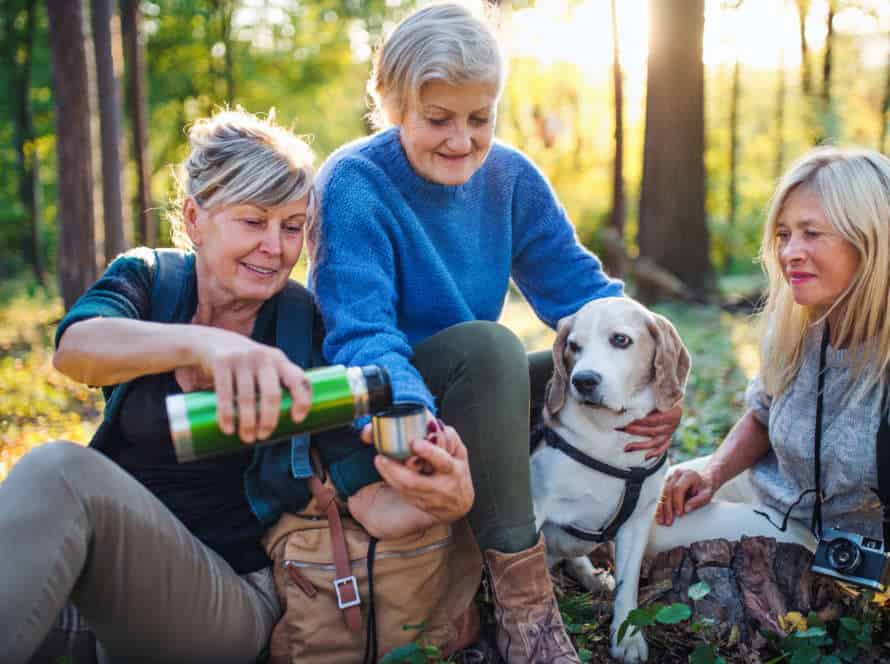Integrating a New Adult Dog Into Your Home: Tips and Tricks
Integrating a new adult pup into your home can be tricky. Yet, with some tips and tricks, you can make it easier for you and your furry pal. Here are some to remember:
- Set Ground Rules: Let your new pup know what’s expected of them.
- Give a Safe Space: Provide an area where they can go when feeling anxious or overwhelmed.
- Introduce Carefully: When introducing them to family or other animals, do it slowly and under supervision.
- Be Patient: It takes time for them to adjust, so take it step by step.
- Show Love: Make sure they know they’re welcome and loved in their new home.
Preparing Your Home for the Arrival of Your New Dog
A new adult pup is an exciting thing! To make sure they feel comfy and secure, your home should be ready for them. Here are some tricks to get your home ready for your four-legged pal!
- Prep your home for the arrival of your furry friend.
- Make sure it’s a welcoming and safe environment.
Getting the Right Supplies
Supplies are important for your pup. Here’s a list of must-haves for comfort and safety:
- Collar and ID tag.
- Leash.
- Food and water bowls.
- Quality dog food.
- Bed or crate.
- Toys and chews.
- Grooming supplies.
- Cleaning supplies.
- Dog gates and barriers.
- Training tools and aids.
Choose items that fit your pup’s size, age, and breed. Also, puppy-proof your home. Take away dangerous items like chemicals and small objects. With the right supplies, you can make your pup’s transition easy.
Dog-Proofing Your Home
Dog-proofing is vital for your pup’s safety and comfort. Here are some tips:
- Hide or remove dangerous items – keep medication, cleaning supplies and small items away.
- Secure your trash can – buy one with a tight-fitting lid.
- Protect furniture – use blankets or slipcovers to avoid scratches and shedding.
- Block restricted areas – use baby gates or pet barriers.
By doing these steps, you can create a great home for your pup!
Creating a Safe Space for Your New Dog
Bringing a new pup home is thrilling! But, it’s essential to make their space safe and cozy. Here are some tips to get ready for their arrival:
- Set aside a peaceful spot: Dogs need a place to chill away from everything. Give them a bed, toys and water bowl in a calm area.
- Put away risky items: Keep hazardous substances and sharp things out of reach. Plug up electric cords and wires so they don’t chew them.
- Secure your home: Dogs love to investigate! Make sure doors, fences and windows are closed properly.
- Start a routine: Dogs need a regular schedule for meals, exercise and rest.
- Train and socialize: Integrating an adult pup into your home needs time, focus and training. Sign up for a training program and give them chances to mingle.
Pro Tip: Creating a safe place is key to the pup’s well-being and joy. Follow these steps and you’ll be on the way to having a content and balanced furry pal!
Introducing Your New Dog to Your Home
A new canine companion? It’s not always a walk in the park! You gotta be patient. When your pup first arrives, let ’em get acquainted slowly. Here’s how:
- Take it step-by-step.
- Make sure they’re comfy.
- Give lots of love and reassurance.
That’ll help them feel secure.
Introducing Your New Dog to Your Family Members
Introducing a new pup to your relatives can be overwhelming. These tips and strategies can assist in making it an easy and tension-free experience. Here’s what to do:
- Find a peaceful, secure area to introduce your new dog to family members one by one.
- Keep the introduction tranquil and in control, enabling your pup to approach your relative at their own pace.
- Set up rules and limitations for interacting with your new pup, such as no shouting or sudden movements.
- Give plenty of time for your new pup to get used to its new environment before introducing it to other pets or family members.
- Gently introduce other pets and family members to your pup, one at a time and with supervision.
- Continuously support positive behaviour with treats and compliments to motivate good habits.
- Remember to be patient and kind throughout the process, as it may take time for your new pup to adjust to its new home and family.
Introducing Your New Dog to Other Pets in the House
Introducing a new pup to other critters in the household? Patience and planning are essential. Here’s what to do:
- Meet in a neutral setting – like a park or a buddy’s yard.
- Keep the intro short and supervise closely.
- Increase the time they spend together over days or weeks.
- Use positive reinforcement to encourage good behavior and discourage aggression.
- Provide separate resources – food, water, toys and beds – to avoid competition.
Remember: every animal has their own personality and temperament. It might take time, but with patience and consistency, your pets can learn to live together in peace.
Having Realistic Expectations of Your New Dog
Bringing a new pup home is a thrilling adventure! But it’s essential to have practical expectations to make the transition simpler for you and your pup. Here’s what to keep in mind:
- Adjustment period: Each pup is special and has their own personality and behaviors. It is usual for your new pup to take time to adjust to the new environment and the people around them.
- Training: It is a must to train your pup and set boundaries to stop any behavioral issues from arising.
- Socialization: Let your pup socialize with other dogs and people to make sure they feel comfortable and secure in various situations.
- Patience: Patience is key when bringing home a pup. It is vital to give your pup time to adjust and form a routine that works for both them and you.
Having these things in mind will make the transition easier for everyone involved!
Building a Relationship with Your New Dog
Adding a grown-up pooch to your family can be difficult. Securing a successful transition is based on having a strong, caring bond with your pup. Let’s discuss how to construct and keep this connection with positive reinforcement, clear communication and regularity.
Establishing a Feeding Routine
Creating a feeding plan is important for forming a strong bond with your adult pup. It also gives them a sense of structure. Here are some tips:
- Work out portion size based on age, weight and activity level.
- Choose quality food that meets their needs.
- Decide on a feeding schedule and don’t change it. For an adult dog, two meals a day, morning and evening, is perfect.
- Create a feeding area, like a corner of the kitchen or laundry room.
- Praise good behavior, like eating in the right spot, and correct bad behavior, like begging or stealing food.
- Always have fresh water available.
- Make mealtime fun by giving them interactive toys or treat puzzles.
Starting Basic Training
Basic training for your pup is an essential part of growing a strong and good bond. If you’ve adopted an adult dog, they may have certain behavior that needs to be managed. Here are some tips to kick-start basic training:
- Create a connection with your pooch – hang out, give treats and praise, and stay constant with commands and actions.
- Use positive reinforcement such as treats, toys, and cheers to promote good behavior and stop bad behavior.
- Start with simple commands such as “Sit“, “Stay“, “Come“, and “Down“. As your pup learns, progress to more complex training.
- Remain patient and sympathetic to your dog, don’t anticipate them to learn it all in a day. Training requires time, consistency, and understanding.
By beginning basic training with your new pet and creating a strong and positive relationship, you can guarantee a blissful and healthy life for both of you.
Understanding Your New Dog’s Personality and Needs
Gaining insight into your new pup’s character and needs is important for forming a robust and healthy bond. Here are some tips on getting to know your new dog better:
- Observe: Look out for your pup’s body language, noises it makes, and how it interacts with people and other animals. This can help determine its likes and dislikes.
- Make time: Take him for walks, play, and train him. Note down what interests the pup and which behaviors should be corrected.
- Look at breed: Different breeds possess different temperaments and qualities. Knowing your pup’s breed can assist you in customizing the training and understanding its special requirements.
As you learn more about your pup, give it the proper nutrition, exercise, and health care to watch it flourish. Keep in mind, patience and love are the keys to a strong relationship with your new dog!
Common Challenges in Integrating a New Dog and How to Handle Them
Exciting and daunting – that’s how it feels to bring a new adult dog home. Emotions may be all over the place, but don’t forget: patience, consistency and understanding are key. Integrating a new adult dog into your home is a challenge, but there are strategies to make it smoother. Let’s check out the most common issues and how to tackle them.
Separation Anxiety
Separation anxiety is a common problem when you bring an adult dog into your house. Dogs are very social and can get anxious and do bad things when left alone for too long.
Here are a few ideas to help your new dog adjust:
- Start by leaving them alone for brief periods of time, then slowly make the time longer.
- When you come and go, don’t make a big deal about it. This will teach your dog that your departures and arrivals are no big deal.
- Give your dog fun toys or puzzles to keep them busy while you’re out.
- You could also try crate training your dog, so they have a comfy space to relax in.
If your pup has very bad separation anxiety or destructive behavior, talk to your vet or a professional dog trainer for more help.
House Training Issues
Bringing a pup into your home can be tough, especially when it comes to house training. Here are some common issues you may face and tips on how to handle them:
- Accidents in the house? Be patient and consistent. Give your pup a certain spot outside to go potty, and take them there often. Reward them for doing the right thing, and use an enzymatic cleaner when their accidents happen inside to get rid of the smell.
- Chewing? Anxiety, boredom, or teething could be the cause. Give them chew toys, and supervise closely to redirect any bad behavior.
- Barking too much? Teach them a “quiet” command. Exercise and mental stimulation are also key to calming them down.
- Jumping? Not great. Teach them to sit instead, and reward good behavior.
With patience and persistence you can help your pup adjust and be a good family member.
Aggression with Other Dogs or People
Integrating a new adult dog into a home can bring up aggression towards other dogs or people. Here are some tips for managing it:
- Get an expert opinion: A professional trainer or behaviorist can provide tailored advice.
- Begin from scratch: With other pets or people in the house, start over with slow, guided reintroduction.
- Set a routine: Regular exercise, meals and play can reduce boredom and frustration.
- Use positive reinforcement: Offer treats, praise and attention to reward good behavior.
- Be consistent: Changes take time. Stick to the training plan and stay positive.
Every dog is special, so be patient when addressing their aggression. With patience, consistency and help, they’ll be able to thrive in their new home.
Seeking Professional Help
Bringing a grown-up pup home? Get pro help! It makes the switch easier for the pup and you. Hire a dog trainer, join a course or have a private session. It’s invaluable in teaching your pup the rules of your home and how to fit in your family. Here are some tips when seeking pro help!
When to Consider Professional Help
Integrating a new adult dog into your home can be tough. Professional help isn’t always needed, but it can be beneficial in certain cases. Examples of when you should consider seeking help are:
- Aggression towards people or other animals
- Excessive barking, chewing, or digging
- Refusing to listen & signs of disobedience
- Severe anxiety or fearfulness
- Any behaviour that is a safety risk
A professional can give guidance and tailor a training plan to your dog’s needs. It’s best to seek help quickly to avoid risks and ensure a successful integration.
How to Find a Qualified Dog Trainer or Behaviorist
It’s essential to get a qualified dog trainer or behaviorist when you bring a new adult dog into your home. Here’s what to do to find the perfect professional for training and managing your pet:
- Look for someone with certification from respected organizations like the APDT or CCPDT.
- Check their experience and knowledge in dealing with similar behavioral issues to your dog.
- Make sure their methods and techniques fit your beliefs about dog training.
- Pick a trainer who is willing to work with your pup’s unique needs and temperament.
Last but not least, don’t be scared to ask for references or talk to past clients, so you know you’re choosing a reliable and experienced professional. With a bit of research, you’ll find the right dog trainer or behaviorist to help you and your new furry friend live together happily.
What to Expect from Professional Help.
Integrating an adult pup into your home can be tough. Seeking pro help can give you support and guidance. Here’s what you get:
- Evaluation of pup’s behavior and temper- An expert will assess your pup’s behavior and temper to find the best integration plan.
- Personalized training plan- They will make a personalized training program for your pup’s needs and character.
- Continuous help- A pro will give constant help to help with any issues and make sure the integration is a success.
- Positive reinforcement techniques- They will use positive reinforcement techniques to teach your pup good behavior, obedience, and socialization.
Pro Tip: Each pup is special, and the timeline for integration may differ. Patience, consistency, and dedication are essential for success.
Frequently Asked Questions
Q: How long does it take for a new adult dog to adjust to its new home?
A: The adjustment period varies for each dog, but it can take anywhere from a few days to a few months for them to feel completely comfortable.
Q: What should I do to help my new dog feel comfortable in their new home?
A: Provide them with a quiet and comfortable space, follow a consistent routine, and give them lots of love and attention.
Q: How do I introduce my new dog to my existing pets?
A: Allow them to meet in a neutral space, keep them supervised, and provide separate food and water bowls and sleeping areas initially.
Q: When should I start training my new dog?
A: Start training as soon as possible, using positive reinforcement methods. It will help build trust and communication between you and your new dog.
Q: What if my new dog displays aggressive behavior?
A: Seek professional help from a qualified dog behaviorist to determine the cause and work on modifying the behavior.
Q: How can I make sure my new dog is healthy?
A: Schedule a vet visit as soon as possible for a check-up and to update their vaccinations. Also, monitor their behavior and appetite for any signs of illness.

